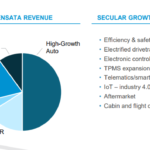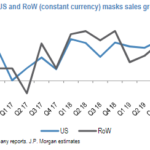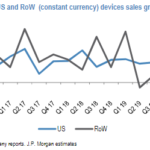Key Takeaways:
Current Price: $108 Price Target: NEW $115 (OLD $100)
Position Size: 3.27% TTM Performance: +15.7%
Medtronic released their 1Q FY20 results this morning, with organic revenue growth of 3.5%, a +90bps adjusted operating margin expansion and +7.7% adjusted EPS growth. Growth was broad based across the portfolio despite tough y/y comparisons, and with no issues impacting sales or margins. The next catalyst for the stock is the introduction of its new robot Hugo (general surgery) in the fall, a new insulin pump and a less-invasive heart valve, creating some excitement around new pipeline projects, and helping growth to reach a 4-5% growth in 2H20. We are updating our price target to $115 after updating our model for the new fiscal year and new guidance provided. We were previously worried competition was increasing and would negatively impact free cash flow margins but recent results shows the management team has been able to manage this pressure.
Updated FY20 guidance:
Organic revenue growth +/- 4% (unchanged)
Operating margin increase of 40bps (ex-FX)
EPS increased $0.10 to $5.54-$5.60 (+8-9% growth y/y) – some of the increase in EPS comes from lower interest expenses linked to the recent July debt refinancing
MDT Thesis:
· Stands to benefit from secular trends (1) increased utilization from Obamacare (2) developed populations age
· Strong balance sheet and cash flows. Increased access to non-cash should allow MDT to meaningfully increase their dividend
· 6% normalized Real Cash yield provides solid total return profile over next 2-3 years
· Ownership interest aligned. Management incentivized to maximize shareholder returns – 14% 10yr average ROIC
[tag MDT]
$MDT.US
Julie S. Praline
Director, Equity Analyst
Direct: 617.226.0025
Fax: 617.523.8118
Crestwood Advisors
One Liberty Square
Suite 500
Boston, MA 02109




